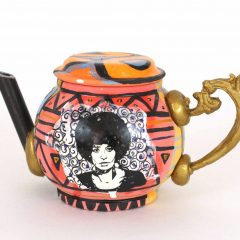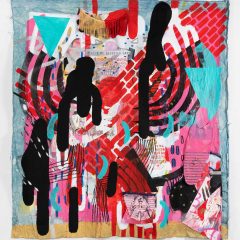On a California trip mostly about being with family–a niece’s wedding and a visit with Minna and Ben–we took a few days with friends on a houseboat in the California Delta. Who even knew there was a California Delta? But there is, east of the coastal mountains where the San Joaquin, American and Sacramento Rivers join in shallow channels criss-crossing tule-bordered land masses. The car approach is via roads atop man-made levees rising above fields and watery swamps and sloughs.
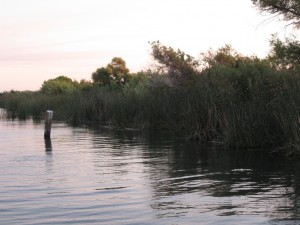
We were getting together with friends Susan and Steve (ex Philly-ites) and Jane and George. (We did the Alaska cruise with this crowd, and they were part of the California wine country event a couple of years ago).
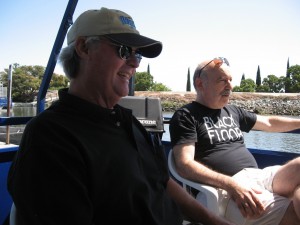
I’m not sure how we all failed to notice in looking at the boat plans how sketchy the sleeping arrangements were–benches that turn into hard bunks, with little privacy. Nor did we have a clue in advance that the fishing would not be for eating (and not even for catching either–George dropped a line only to bring in sea weed). And no where was there a warning that there was no way in and out of the boat to swim.
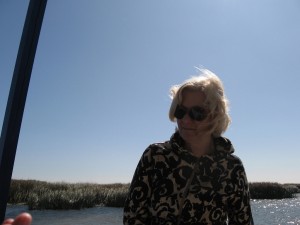
But the weather was perfect, better than we could have predicted–cool and clear.
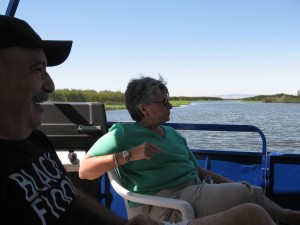
We set a course for Locke, a Chinese town founded 1915 near the San Joaquin River, when fire destroyed the homes of Chinese agricultural workers in nearby Walnut Grove.
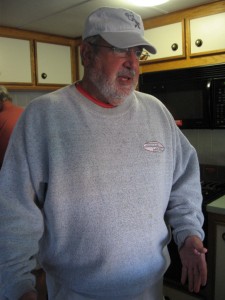
Riding up the river is kind of like fishing. There’s not much happening–a decision here and there on whether to circle the island on its left or right side, a decision on where to set anchor for the night. We spot an egret, a blue heron, some sea lions. In betweeen, not much.
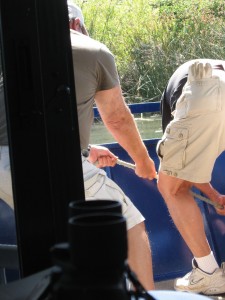
The anchor was our first adventure–not setting the anchor but raising it the next morning. Maneuvering the boat so its rear was directly over the anchor–the sweet spot for releasing it from the muddy bottom–was not so easy. After a lot of backing and forthing and pulling and grunting, the anchor finally came free.
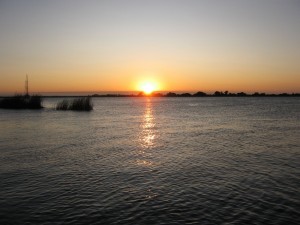
Our second adventure was getting stuck in the mud. After trying to get out, we called the marina for a tow. They laughed at us, basically, gave some instructions and suggested we wait for high tide, about six hours hence. Once again, the operation involved a lot of backing and forthing, and lefting and righting, and finally the boat came free.
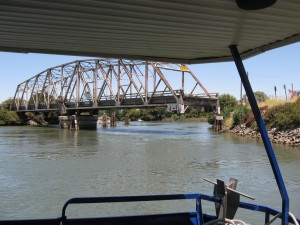
Then there were the two bridges. Both looked low to us. We tooted our horn to get the first bridge to open, but no one responded. Our boat was supposedly 14 feet high, and the bridge was supposedly 12 feet high according to the water mark on the side of the bridge. So, with George worrying and sighting at the front end, Steve on the wheel, and Murray sighting from the back of the boat across the roof, we risked it and barely slid under. Safe. At the second bridge we got an answer to our tooting and it pivoted open for us.
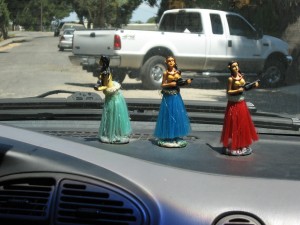
We parked at Walnut Grove Marina and a local artist, Chris Spencer, gave us a ride up to the town. He had a pick up truck, but the woman at the marina had a van big enough for all of us. On our way into Walnut Grove, I noticed the Welcome to Walnut Grove sign looked anything but conventional. Then in Spencer’s studio, I realized why. Chris had painted it.
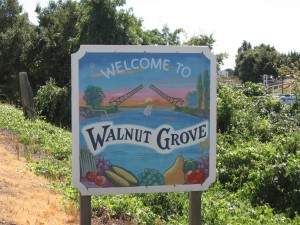
A navy brat, he came to Walnut Grove with a friend for a night of bar hopping, got offered a job and never left! He is a graphic designer, and is currently doing illustrations for a children’s book.
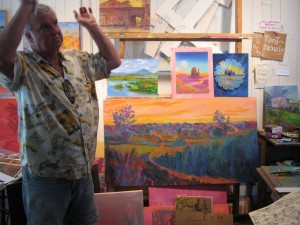
We walked from Spencer’s studio over to Locke. It looks like one of those towns in movie westerns. Unlike most old places, no one has fixed this one up. The old wooden buildings still remain, looking improbably old but still standing.
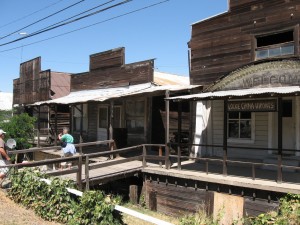
Quirky signs and narrow paths closed to through traffic let you know that whoever has moved here is looking for a different lifestyle. There’s some attytood in the town. The most famous eatery is Al the Wop’s, a saloon that wears its state of semi-decrepitude with pride. After we placed our first two orders we got the message–the menu is the menu, with absolutely no substitutions.
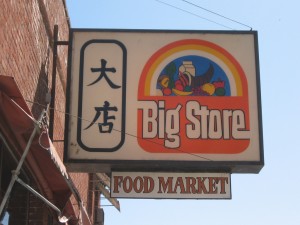
In both towns, the signs are in English and Chinese. (Some may be Japanese for all I know; there also had been many Japanese people who lived in Walnut Grove before World War II, when they were sent to internment camps).
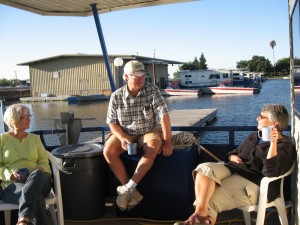
We headed back to home base at Paradise Point Marina a night early, not wanting to drop anchor (or really raise anchor) again.
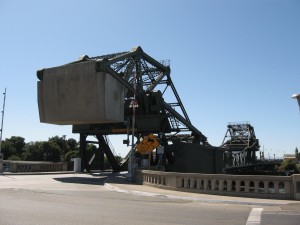
The pivot bridge once again opened for us, and the other bridge we again chanced, not realizing someone was manning it and heard our horn toot. Just as we were slipping under the bridge’s deck, we saw him holding his head, his eyes big as saucers.
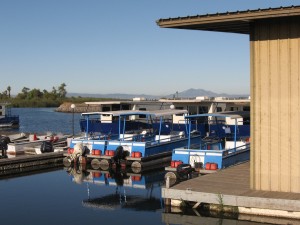
Back in dock, we ate at a terrific Chinese restaurant in Stockton, Dave Wong’s, the quality no doubt a reflection of the area’s historic Chinese population, some of whose descendants we saw around us. Looking around the delta, though, we saw field workers who looked like they might be Mexican.
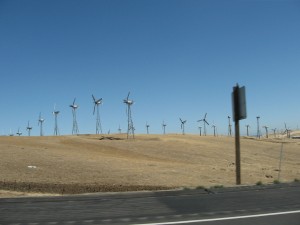
The next morning, it took us an hour and a half to reach San Francisco, where characterizing the population was impossible. We fit right in.


